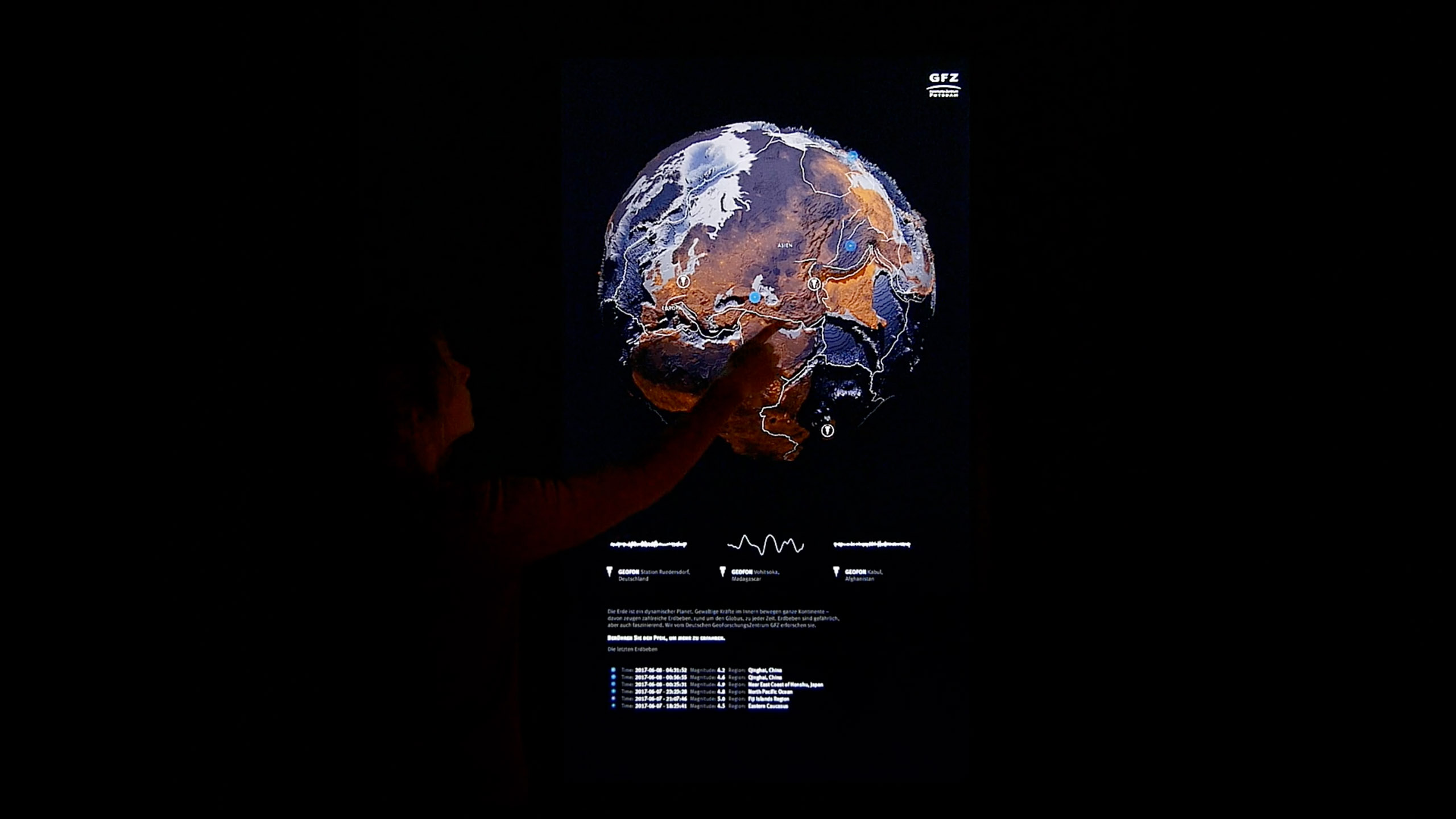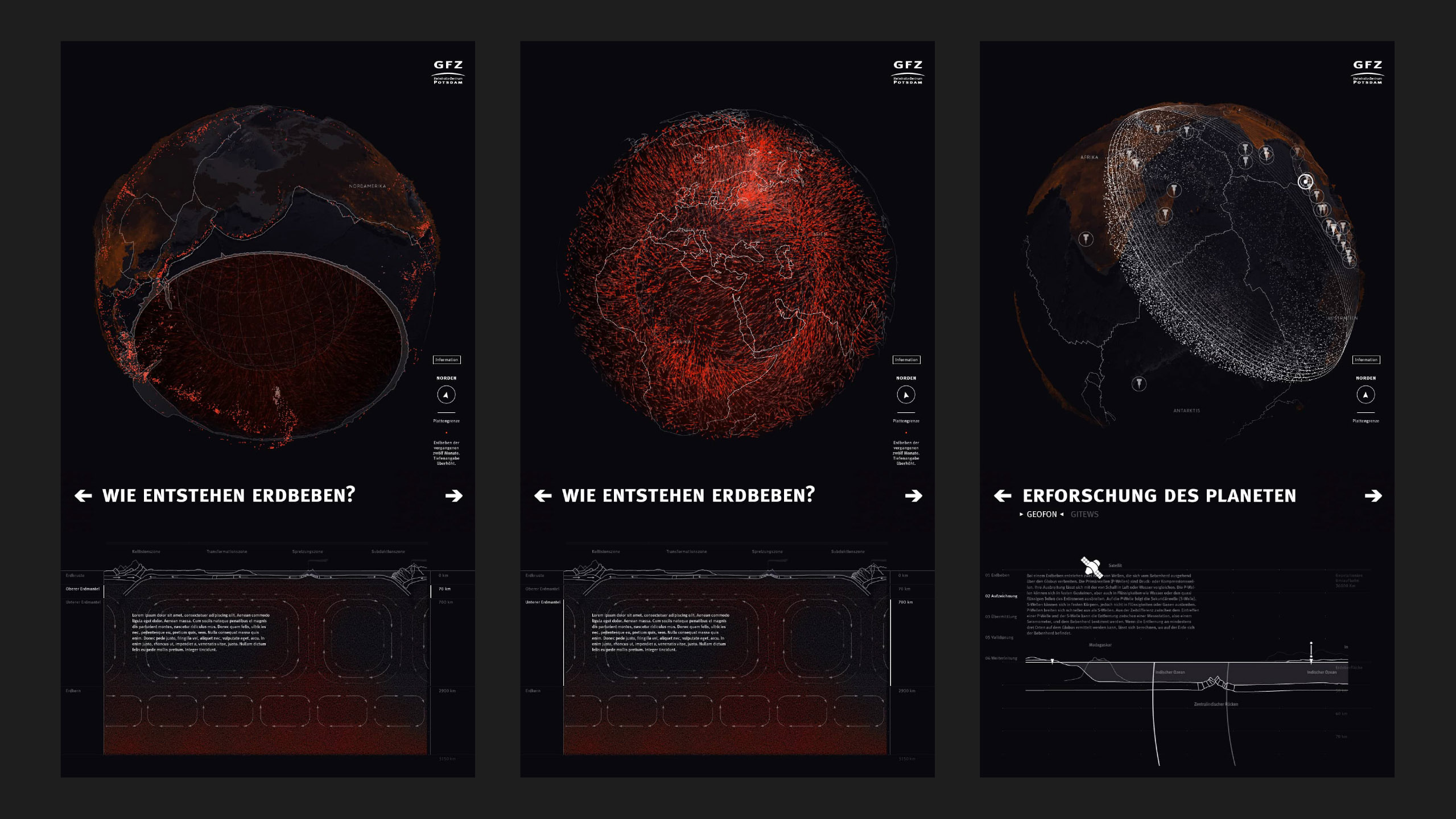Dynamic Planet
CLIENT
GFZ German Research Centre for Geosciences
RESEARCH FIELD
TYPE
Interactive Poster
YEAR
2017
Dr. Andrey Babeyko
Dr. Sascha Brune
Dr. Peter Evans
Cedric Evers
Dr. Monika Korte
Dr. Martin Rother
Dr. Joachim Saul
Dr. Bernhard Steinberger
Dr. Angelo Strollo
Editors:
Dr. Ariane Kujau
Ralf Nestler
The Interactive Scientific Poster „Dynamic Planet” was designed and developed for the exhibition „Focus Earth” of the GFZ German Research Centre for Geosciences in Potsdam. One of the main advantages of a digital poster is that it can display dynamic content. This is at the same time the essential statement of the scientific poster “Dynamic Planet”: Our earth never stands still, it is permanently shaken by earthquakes. These tensions are measured by the GFZ and their data is visualized in real-time in an interactive poster in the exhibition context. The viewer is given a direct impression. He can be a “witness” to current measurement and scientific research.
The challenge for the interface design was to ensure a clear overview despite of the massively many events. The solution consists in 3D interactive graphical representation of the events by filtering the earthquakes by eg. magnitude and depth. A special and unseen visual feature of the scientific poster “Dynamic Planet” is the representation of the earthquakes depth in a transparent, glowing globe. A fluid earth’s core in constant change.


Exhibition
The interactive poster was part of the exhibition “Focus: Earth- About the measurement of our world”
The exhibition of the GFZ German Research Center for Geosciences in collaboration with the House of Brandenburg-Prussian History (HBG) was shown in Potsdam from 4 June to 9 July 2017.
„We are very happy about the positive response we have received so far,” says Dr. Kurt Winkler, CEO and Director of the HBPG. “The aim of the exhibition-makers was to address younger guests in particular. The program for school classes included a guided tour through the show and also experiments with which the pupils themselves discovered how geo research works. (…) Last but not least, the “Scientific Poster” on the subject of earthquakes also attracts considerable interest. On a large display, earthquake information from all over the world is presented in a unique way. The earth can be explored individually and interactively because of the touch-sensitive screen.”
More projects